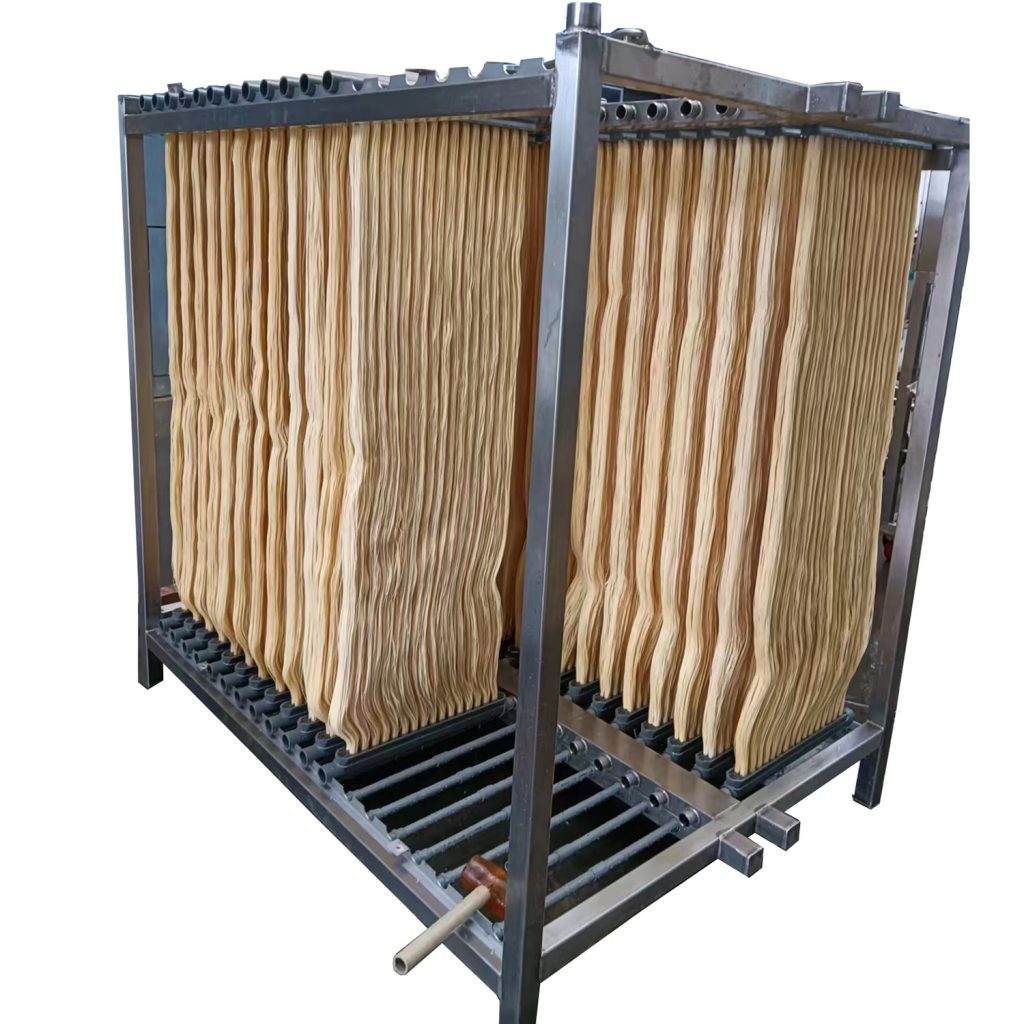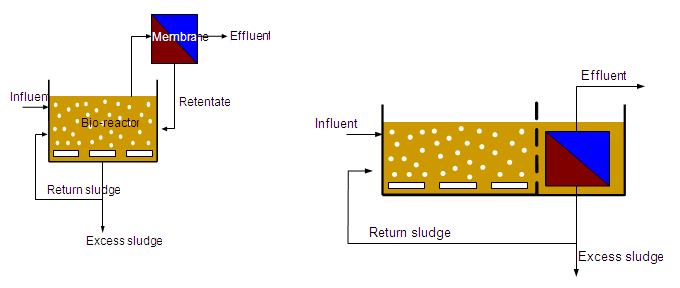The Science Behind Membrane Bioreactor: How It Works and Why It’s Effective
The Science Behind Membrane Bioreactor: How It Works and Why It’s Effective
Blog Article
The Advantages of Membrane Bioreactors in Lasting Wastewater Management
Membrane layer bioreactors (MBRs) represent a pivotal improvement in sustainable wastewater monitoring, efficiently combining biological therapy with sophisticated membrane layer filtration modern technology. This combination not only boosts effluent top quality by effectively getting rid of contaminants however additionally opens methods for water reuse in different applications, therefore dealing with the pressing requirement for source preservation. The compact design of MBRs adds to substantial reductions in ecological influence and functional prices. As the demand for sustainable options magnifies, checking out the complex advantages of MBRs may reveal unexpected ramifications for the future of wastewater therapy systems.
Introduction of Membrane Layer Bioreactors
Membrane bioreactors (MBRs) stand for a considerable innovation in wastewater treatment innovation, integrating organic degradation with membrane layer purification to boost the effectiveness of the treatment process. This ingenious system integrates the benefits of conventional triggered sludge processes with membrane layer technology, allowing for improved solid-liquid splitting up. MBRs utilize semi-permeable membrane layers to separate cured water from biomass, causing high-quality effluent that can be recycled or safely released right into the atmosphere.
The operational design of MBRs commonly entails a bioreactor where microbes break down natural issue, adhered to by a membrane layer device that filters the combined alcohol. This configuration not just decreases the footprint of the treatment center but also enables greater biomass focus and decreased hydraulic retention times. Additionally, MBRs can dealing with a broader variety of contaminants, including nutrients and microorganisms, making them appropriate for different applications, from community wastewater treatment to industrial effluent processing.
The combination of MBRs into wastewater administration systems is a sign of a growing pattern towards efficient and lasting methods in environmental engineering. Their capacity to generate high-grade effluent while reducing area demands settings MBR innovation as a principal in contemporary wastewater therapy services.
Boosted Effluent Quality

The membrane layer filtering procedure functions as a physical obstacle, making it possible for the retention of microbes and particulate issue, which adds to a more clear and cleaner effluent (Membrane Bioreactor). Moreover, MBRs operate at greater biomass focus than conventional activated sludge systems, advertising more efficient biodegradation of contaminants. This brings about a decrease in biochemical oxygen demand (BOD) and overall put on hold solids (TSS) levels in the final effluent
Furthermore, MBRs demonstrate exceptional efficiency in dealing with difficult wastewater structures, such as industrial effluents and wastewater with high nutrient lots. Therefore, the effluent created is typically of greater high quality, permitting even more versatile disposal choices and lowered ecological influence. Ultimately, the enhanced effluent quality attained through MBR modern technology underscores its crucial role beforehand sustainable wastewater administration methods.
Water Reuse Opportunities
The high-grade effluent generated by membrane bioreactors (MBRs) opens up substantial chances for water reuse in different applications. MBRs efficiently remove pollutants, including microorganisms, put on hold solids, and natural issue, resulting in treated water that meets or surpasses regulatory requirements for reuse. This top quality allows for the execution of water recycling initiatives throughout varied industries.
One prominent application is in agriculture, where treated wastewater can be made use of for irrigation, promoting lasting farming practices while saving freshwater resources. Furthermore, MBR-treated effluent can be utilized for industrial procedures such as air conditioning, cleansing, and as a procedure water source, dramatically decreasing the need for safe and clean water in these operations.
In urban environments, MBRs facilitate using recovered water for landscape watering, toilet flushing, and various other non-potable usages, adding to the total durability of water system systems. In addition, the assimilation of MBR modern technology in decentralized systems help in taking care of localized water needs, especially in water-scarce areas.
Reduced Environmental Effect
Just how can the fostering of membrane bioreactors (MBRs) contribute to a decreased ecological influence in wastewater monitoring? MBRs substantially enhance the therapy performance of wastewater while decreasing ecological disruptions. By integrating biological therapy processes with membrane filtration, MBRs properly get rid of a large range of pollutants, including natural issue, nutrients, and pathogens. This sophisticated filtration brings about higher-quality effluent, which is important for securing water ecosystems and decreasing the worry on natural water bodies.
In addition, MBRs run at lower hydraulic retention times contrasted to traditional systems, leading to smaller sized treatment plant footprints. This compact style decreases land use, thus preserving all-natural habitats and biodiversity. The process also generates less sludge than standard approaches, reducing disposal obstacles and lowering greenhouse gas emissions connected with sludge administration.
Furthermore, MBRs promote the healing of important sources, such as water and nutrients, contributing to a round visit this page economic situation. By making it possible for water reuse for irrigation or commercial procedures, MBRs help reduce freshwater deficiency, hence advertising lasting water utilize techniques. Eventually, the fostering of MBR innovation represents a significant stride towards reducing the ecological impact of wastewater administration systems.
Financial Advantages of MBRs

Furthermore, MBRs promote the production of top notch effluent, which can be recycled for numerous applications, such as agricultural watering and industrial processes - Membrane Bioreactor. This reuse capability can significantly decrease water procurement prices, supplying an economic incentive for markets facing stringent water guidelines
The small style of MBR systems my website also causes lowered land needs, which is specifically valuable in urban locations where genuine estate is pricey. By decreasing space, towns and sectors can reduce land purchase and maintenance expenditures.
Moreover, MBRs frequently need less constant maintenance and have a longer life-span than traditional systems, further contributing to cost financial savings. In recap, the financial benefits of MBRs-- ranging from reduced operational expenses to land financial savings and effluent reuse-- make them a compelling option for sustainable wastewater administration, supplying both long-lasting and prompt financial advantages.
Conclusion
Membrane bioreactors represent a transformative strategy to lasting wastewater monitoring, incorporating biological therapy with sophisticated membrane layer filtration for premium effluent high quality. Their ability for effective impurity removal helps with water reuse, therefore conserving crucial freshwater sources. Additionally, MBRs contribute to lowered environmental impacts through small layouts and reduced sludge generation. Economic benefits better boost their practicality, making MBRs a promising service for attending to the difficulties of wastewater treatment and promoting lasting resource management.
Membrane layer bioreactors (MBRs) stand for an essential improvement in sustainable wastewater management, efficiently combining biological treatment with sophisticated membrane layer purification modern technology.Membrane bioreactors (MBRs) represent a substantial improvement in wastewater therapy modern technology, integrating organic deterioration with membrane layer filtering to boost the effectiveness of the treatment procedure.Attaining boosted effluent high quality is one of the most substantial advantages of making use of address membrane layer bioreactors (MBRs) in wastewater therapy.Additionally, MBRs show outstanding performance in dealing with difficult wastewater structures, such as commercial effluents and wastewater with high nutrient lots.Integrating membrane layer bioreactors (MBRs) right into wastewater administration not only decreases environmental impact yet likewise offers substantial economic advantages.
Report this page